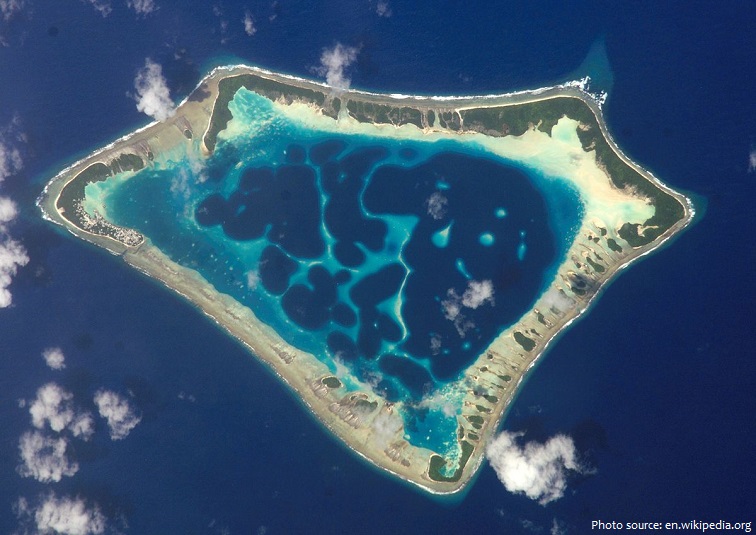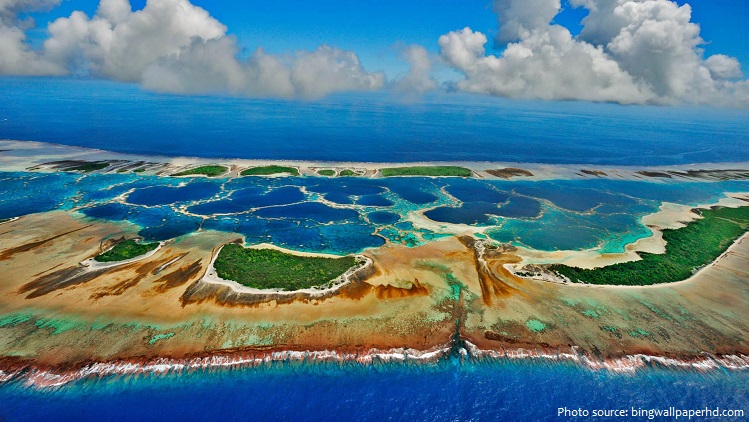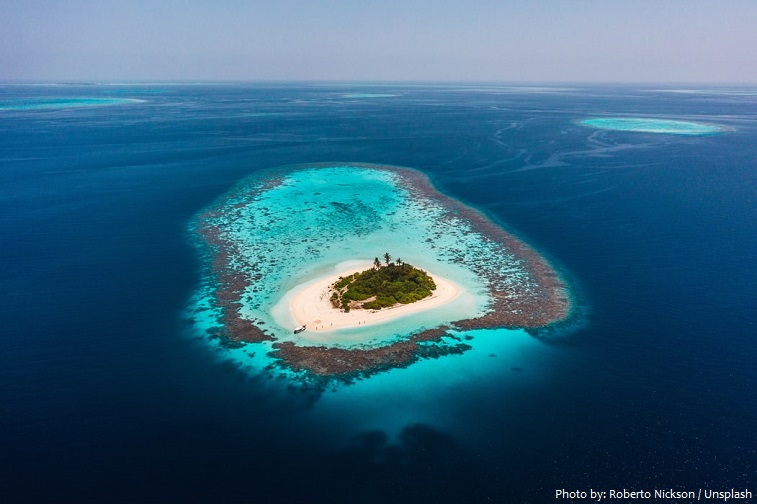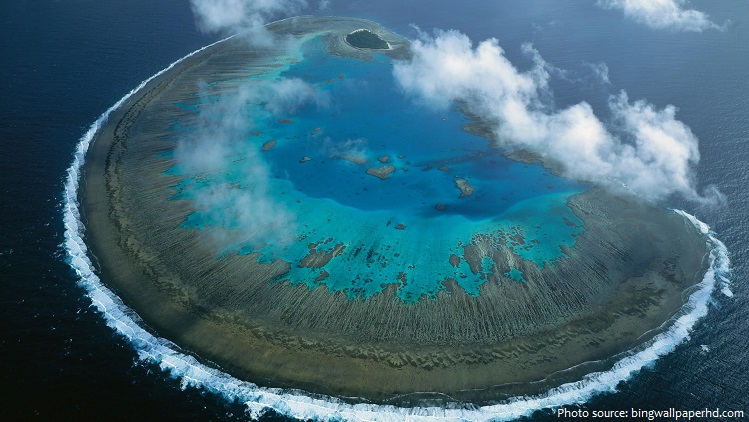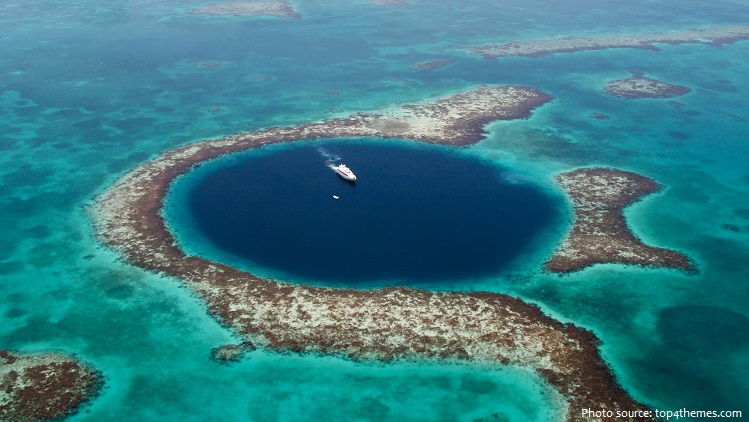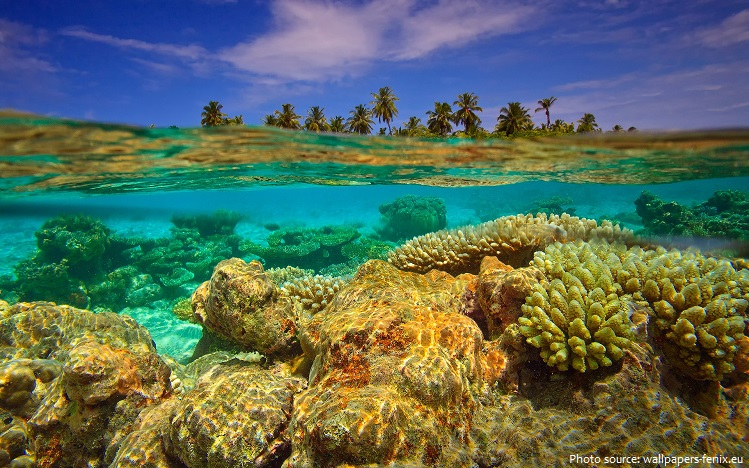An atoll is a ring-shaped reef of coral enclosing a shallow lagoon.
Oftentimes, atolls are uninhabited desert islands relatively untouched and unexplored by humans, although some grow beyond short reef formations, forming substantial landmass.
It begins as a reef surrounding a slowly subsiding island, usually volcanic. As the island sinks, the coral continues to grow upwards until eventually the island is below sea level and only a ring of coral is left at the surface.
The formation of an atoll is a slow process that can take millions of years.
In most cases, the land area of an atoll is very small in comparison to the total area.
Atolls range in size from small to those so wide that the coral reefs on the far side cannot be seen across the lagoon. Atoll widths range from about 2.5 to nearly 100 km (1.5 to 62 mi), but the mean value is about 20 km (about 12 mi).
Measured by total area, Lifou is the largest raised coral atoll of the world with 1,146 square kilometers (442 square miles) followed by Rennell Island with 660 square kilometers (255 square miles).
Atoll islands are low lying, with their elevations less than 5 meters (16.5 feet).
There are approximately 440 atolls in the world.
Most of them are in the Pacific Ocean and Indian Ocean.
Atolls are some of the most complex and vibrant structures on the planet. Built diligently over thousands of years by tiny, sea anenome-like coral polyps, these ring shaped coral structures look stuning from air.
The word “atoll” comes from the Dhivehi (an Indo-Aryan language spoken on the Maldive Islands) word atholhu ( meaning the palm (of the hand). Its first recorded use in English was in 1625 as atollon. Charles Darwin recognized its indigenous origin and coined, in his The Structure and Distribution of Coral Reefs, the definition of atolls as “circular groups of coral islets” that is synonymous with “lagoon-island”.
In 1842, Charles Darwin explained the creation of coral atolls in the southern Pacific Ocean based upon observations made during a five-year voyage aboard HMS Beagle from 1831 to 1836.
The Lighthouse Reef Atoll is the most remote of all the atolls in Belize. The atoll is home to over 20 world-renowned dive and snorkel sites, including Great Blue Hole a World Heritage Site of the United Nations Educational, Scientific and Cultural Organization (UNESCO). The hole is circular in shape, 318 metes (1,043 feet) across and 124 meters (407 feet) deep. It is the world’s largest natural formation of its kind.
The marine wildlife of Baa Atoll consists of marine species living in a circular archipelago in the Maldives, inside the administrative division of Baa Atoll, which is the southern part of Maalhosmadulu Atoll. Baa Atoll was named a biosphere reserve by UNESCO in 2011.
And Atoll Biosphere Reserve is a Biosphere reserve located in the Federated States of Micronesia (FSM). It was declared in 2007 and covers on area of 950 hectares (2,300 acres) on land and waters associatedwith the And Atoll.
Although some atolls are inhabited, many are deserted because they’re remote, difficult to reach, and have few natural resources. Soil quality tends to be poor and erosion is an ongoing threat. Their pristine beaches and crystal-clear waters can be attractive to tourists, though.
Malé is the capital and most populous city in the Republic of Maldives. It is situated at the southern edge of North Malé Atoll. With a population of 215,879 and an area of 8.3 square kilometres (3.2 square miles), it is also one of the most densely populated cities in the world. The city is geographically located at the southern edge of North Malé Atoll (Kaafu Atoll)
Because of their isolated and often uninhabited locations, atolls were used as testing sites for nuclear weapons by the US, Britain, and France after World War II.
